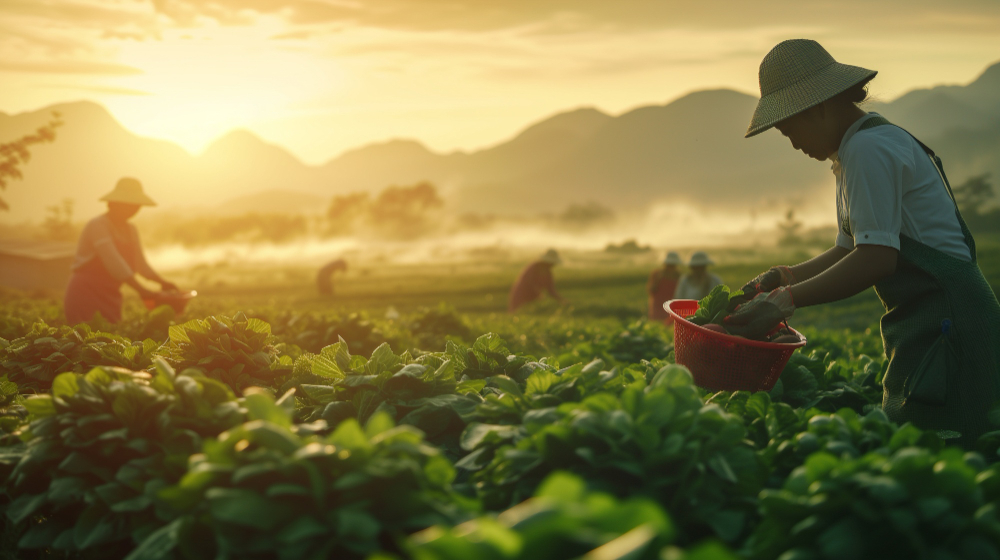Preventing Post-Harvest Losses with AI: A COO’s Guide to Smarter Supply Chains

For Chief Operating Officers (COOs) in agriculture, success isn’t measured solely by a bumper harvest—it’s by how much of that harvest actually makes it to market. The painful reality is that post-harvest losses account for up to 30% of total food production in some regions due to spoilage, inefficient logistics, poor storage, and outdated tracking systems.
With food demand rising globally and climate challenges making harvest windows tighter and more volatile, COOs are under immense pressure to modernize post-harvest operations.
Artificial Intelligence (AI) now offers the precision, foresight, and automation needed to streamline agri-logistics, reduce waste, and deliver produce fresher, faster, and with fewer losses.
Let’s walk through how AI—when combined with a Virtual Delivery Center model—can help COOs lead the post-harvest revolution.
Every inefficiency after harvest is a leak in the supply chain. Common culprits include:
Spoilage from poor cold chain management
Inefficient inventory turnover
Mismatched demand forecasting
Poor visibility across warehouses and distribution points
Manual handling delays
These issues don’t just cause revenue losses—they damage brand trust and impact long-term sustainability. For large farming cooperatives or food distributors, the cost runs into millions annually.
Takeaway: The post-harvest phase is often the weakest link in agricultural operations—and the one with the highest potential for cost recovery.
Storage facilities are often black boxes. You set temperatures and hope everything stays stable. AI eliminates this guesswork.
Smart Sensors + AI: Platforms like Arable and CropX integrate with storage units to monitor temperature, humidity, gas levels (like ethylene), and even vibration.
Anomaly Detection: AI systems alert managers in real-time if spoilage risk is detected, preventing irreversible losses.
Example: A fruit export business in South Africa deployed AI sensors in its cold storage chain. By reducing unnoticed temperature spikes, it cut spoilage by 28%, saving hundreds of thousands of dollars.
Takeaway: Real-time environmental analytics transform passive storage into intelligent preservation.
Agricultural products are perishable. Every hour matters. Traditional routing systems don’t account for freshness windows. AI does.
Predictive Routing: AI evaluates road conditions, weather, and historical delivery patterns to determine the fastest, least risky route.
Dynamic Re-Routing: If unexpected delays occur (traffic, strikes, breakdowns), AI suggests alternatives in real time.
Load Prioritization: For mixed shipments, AI can prioritize more perishable loads for earlier drop-offs.
Example: A dairy supply chain in Europe used AI-powered route optimization from Tive and reduced product return rates by 40%, simply by adjusting delivery order based on shelf life.
Takeaway: AI ensures produce reaches the right place at the right time—in the right condition.
Mismatch between production and demand is a top reason why perishable goods go to waste. AI solves this with hyperlocal demand prediction.
Sales Data Integration: AI ingests retail demand signals, weather patterns, past buying behavior, and current events to predict how much of each product is needed where.
Harvest Planning: Farmers can then adjust harvesting and shipping schedules based on projected demand.
Inventory Efficiency: Distributors avoid overstocking low-demand items that are likely to perish.
Example: A tomato processor in California used AI models from Conservis to align harvest volumes with supermarket demand. This reduced excess harvesting by 17% and improved profit margins by 12%.
Takeaway: AI brings harmony between field output and consumer demand, reducing losses and increasing revenue.
Manual grading is time-consuming and prone to error. AI-enabled computer vision now automates this with incredible accuracy.
Visual Inspection: AI scans for size, ripeness, bruising, and defects.
Automated Sorting: AI-enabled machines separate premium products from seconds, accelerating throughput.
Quality Consistency: Reduces human bias and ensures consistent quality—crucial for retail contracts.
Example: A mango exporter in India installed an AI-powered sorting line. It improved grading accuracy to 95%, reduced sorting labor by 50%, and ensured premium fruits consistently fetched better market prices.
Takeaway: AI ensures that what you harvest is handled with the precision it deserves.
For most COOs, adopting AI means one big fear—where do I find the people to build and maintain all this tech?
That’s where the Virtual Delivery Center (VDC) from AiDOOS comes in.
With a VDC, you can:
Access Ready Teams: Tap into global teams of AI engineers, logistics experts, and agri-domain specialists—without hiring them.
Deploy Fast: Want to implement cold storage monitoring or optimize delivery routing in 30 days? The VDC model enables plug-and-play execution.
Scale by Season: During harvest season, scale up your VDC capacity. Post-season, scale down. Pay only for what you use.
Integrate Seamlessly: VDC teams work directly with your internal ops and tech, ensuring integration with ERPs, WMS, and transportation systems.
AiDOOS has already delivered measurable value across multiple industries—including agriculture—by helping organizations eliminate delivery bottlenecks and execute AI projects without hiring overhead.
Takeaway: The VDC approach removes the last barrier to adopting AI: the people needed to execute it.
Post-harvest management is no longer a logistics challenge—it’s a data problem. And AI is the ultimate problem-solver.
For COOs, this is the new blueprint:
Use AI to monitor storage environments and prevent spoilage
Optimize logistics with predictive routing and prioritization
Align supply and demand through intelligent forecasting
Automate grading and sorting for quality and speed
Scale all of the above without hiring full-time teams—via a Virtual Delivery Center
By integrating AI at each step of the post-harvest journey, COOs can dramatically reduce losses, improve operational efficiency, and enhance product quality from farm to fork.
And platforms like AiDOOS make that transformation faster, leaner, and fully aligned with your delivery goals.

By adopting tools like AI, predictive analytics, and cloud-based command systems—and by integrating them through Virtual Delivery Centers—COOs can convert uncertainty into action and fragility into resilience.